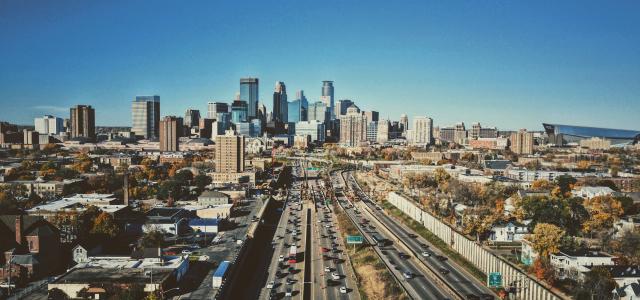A Run on the Banks Part 2
“We are the reserve currency, I see no option for any other currency to be the reserve currency… Nobody knows how far you can go with a paper currency before it gets out of control… You don’t want to try and pick out a point where it becomes a problem… We all need to be very careful as its very hard to see how you recover once you let the genie out of the bottle and people lose faith in the currency and they behave in an entirely different matter when they feel they are losing purchasing power… Inflation expectations become self fulfilling… The decision to cut spending is a political and tribal decision now…
and its madness to keep printing money.”
– Warren Buffet, May 6th at the Berkshire Hathaway Annual Meeting
Following up on last month’s write up I did on the emerging banking crisis, I thought now would be a good time to give you all an update on what has been happening. The last letter I sent out was after a turbulent weekend in which several banks failed. Images of the Great Depression went through our minds as we visualized depositors flocking to the banks to get whatever the bank had left of their money. Last month, we witnessed the failures of several banks, most notably Silicon Valley Bank, Signature Bank of New York, and Silvergate Capitol. The crisis was brief and fears were quickly contained. The FDIC, backed by the Federal Reserve and the US Treasury were able to swoop in and bailout all depositors on Sunday evening before markets could open. In the eyes of the government, maintaining public confidence in our banking institutions was the number 1 priority and needed to prevent bank runs at other banks.
However, despite recent reprieve in the financial sector, First Republic Bank was the next domino to fall as the San Francisco bank closed on Sunday April, 30th. The bank has been struggling for the last 2 months as the share price collapsed over 95% with many depositors taking all their money out of the bank. On Friday, April 28th the bank was taken into FDIC receivership as there were no buyers for the bank and they were facing bankruptcy. On Monday, May 1st, JP Morgan Chase was able to buy the from the FDIC at auction for $10.6 Billion. Regulators and the government do not want the word “bailout” being used due to the negative connotations it carries. In 2008, bailouts of major banks led to political unrest and the creation of the Tea Party and the Occupy Wall Street movements. The FDIC facilitating the acquisition of FRC was a great move for JP Morgan Chase. They profit $2.5 Billion this year and will see $500 million per year on a going forward basis. On top of that, the FDIC has lent them $50 Billion. The shareholders of FRC are wiped out and the loss, or loan If you will, will be shared collectively by tax payers and depositors at other banks. It makes one wonder, how much money does the FDIC really have??
Regional Banking Crisis
Bank runs; they are different now than they used to be. Credit Suisse, a large European bank that recently failed blamed social media for their collapse. Information and rumors now move very fast over social media and bank withdrawals can be done digitally and instantaneously from the comfort of your home. It isn’t like the good old days where you maybe heard a rumor from your neighbor and had to drive down to the bank to wait in line for your money. While this threat is very real, it is only part of the problem these banks are facing. Many of these banks purchased long duration government bonds while interest rates were near record lows and once the Federal Reserve started raising interest rates to tame inflation, the bonds they had purchased dropped significantly in value. If the banks were to hold these bonds for the duration, it would have not been a big deal. Unfortunately, these banks were facing depleting deposits and were forced to sell at a loss, compounding their problems. On top of that, the economy is worsening and lending is a risky business if a we are entering a recession.
Bank Consolidation
Today’s banking crisis cannot only be looked at with near term thinking. This isn’t just a couple of banks that made risky investments or were victims of bank runs. This is part of an ongoing decades long trend of the big banks getting bigger and being deemed “too big to fail.” The 2008 financial crisis was resolved with 4 major banks consolidating and trend looks to again be accelerating.
The SPDR Regional Banking ETF ($KRE) is an ETF with holdings consisting of smaller regional banks. This ETF has had a terrible year and is currently down 37% year to date. To me, this is a telltale sign that the foundation of regional banks is very unstable. Pac West ($PACW), Western Alliance Bank ($WAL), and Metropolitan Bank ($MCB) are some of the worst performing names in the fund. I don’t want to speculate or say that they are next, but their share prices do not look good. On Tuesday, May 2nd many of the names in the KRE were down 30% or more and halted many times, yet no comment from the FDIC or the Treasury.
Federal Reserve Policy
The Federal Reserve met on March 3rd and decided to raise the Federal Funds rate one last time by .25%. This will most likely be the last rate hike of this cycle. No one no knows for sure but that seems to be the prevailing thought on Wall Street. The Federal Funds Rate is now above 5% and that is considered by many to be a “neutral rate.” Meaning the rate doesn’t restrict or promote economic growth. The question now remains is how long will they keep at this level and will there be a reason to continue raising it due to stubborn inflation or have to lower it due to an economic crisis? The regional banks are crying uncle and clearly are not faring well with the restrictive rate.
The Federal Reserve, as I have been saying all along is stuck between a rock and a hard place. They kept interest rates too low for too long and printed way too much money. This pushed inflation well above their objective of 2%. Now that inflation is above 2%, interest rate hikes have been needed to slow inflation. However, the rate at which they have raised rates has caused a lot of unintended consequences that have been devastating for the economy. On top of their increase in interest rates, they have also been reducing the amount of money on their balance sheet. On the chart below, you will see the rise on the Federal Reserve’s balance sheet following the Covid crisis. In the beginning of 2022, you see the chart create a rounded top and start to decline as the Fed engaged in a more restrictive monetary policy. The little blip you see where It recently shot up is the bailout of depositors at Silicon Valley Bank. The question remains to be seen, will the Fed need to bailout more depositors and will the FDIC need to be backstopped by more money printing from the Federal Reserve?
Federal Reserve Total Assets US Money Market Yields vs US Bank Deposit Yields
A big conversation lately has been how strong yields in money market accounts have been. The chart above shows yield of money market funds in green closely following the Federal Funds Target Rate in red. They are now vastly out yielding checking accounts and savings accounts. This continues to add mounting pressure to banks as depositors can get a better yield with money market funds.
Summary
The banking crisis seems to be moving towards another consolidation. The big banks will get bigger as they eat up the smaller banks. The stock market has been generally apathetic to the whole thing as other sectors have continued to move along with many of them doing quite well, particularly, healthcare, technology, and precious metals. We continue to favor large cap, dividend paying companies with low to no debt. We are coming up on a potential debt ceiling showdown. I am guessing it will get passed last second like it always does as both sides are forced to make concessions. I will have more on that as the time gets closer and we have a better idea of how that will all play out. With the debt becoming a much larger percentage of GDP and the status the US Dollars dominance coming into question, the decisions made by our elected leaders are becoming increasingly important.
In the meantime, enjoy the summer weather and feel free to reach out with any questions or concerns.
Sincerely,
Bruce Carlson, CFP®
President
Carlson Asset Management

